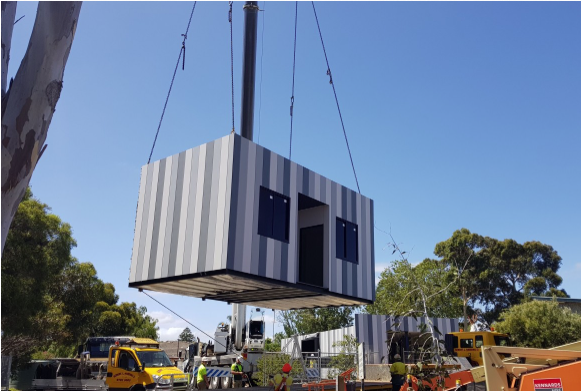Prefab schools of the future, miles away from old portables

University of Melbourne researchers are working with BHA Project Management and the Victorian Government to improve the design and delivery of 100 prefabricated schools in Victoria over a four-year period.
Currently 1547 government schools educate more than 600 000 students in the state of Victoria alone.
With Victoria’s population forecast to grow to around 10 million by 2051, Dr David Heath and Dr Tharaka Gunawardena from the University’s Australian Research Council Training Centre for Advanced Manufacturing of Prefabricated Housing are helping to deliver a cost-effect solution to meet this rising demand.
“Access to schools with high-quality classrooms and safe learning environments is something every parent wants and ever child needs,” Dr Gunawardena said.
“Constructed offsite in as little as 17 weeks, the modular classroom looks set to play a leading role in our learning environment.”
Dr Heath said the modern, modular classrooms are built as permanent structures and bear little resemblance to the old-style ‘portables’ many former students endured several decades ago.
“This new generation of prefab classrooms are bright, adaptable to different configurations and well insulated against outside elements and noise,” Dr Heath said.
Dr Heath said modular construction was a natural fit for schools as up to 95 per cent of construction takes place offsite, with on-site activities reduced to weeks instead of months.
“Getting the timing right is crucial. Demolition, site preparation, delivery and installation all have to happen during the narrow window of a school-term break,” he said.
“Fortunately, the timing can be incredibly precise for this new generation of modular classrooms.”
In addition, Dr Heath said, the prefab classrooms are also more sustainable.
“Because they are not constructed onsite, waste is reduced by up to 40 per cent,” Dr Heath said.
“Further benefits of a factory build include improved worker safety, a better working environment and the removal of delays due to bad weather.”
Read more on Pursuit.